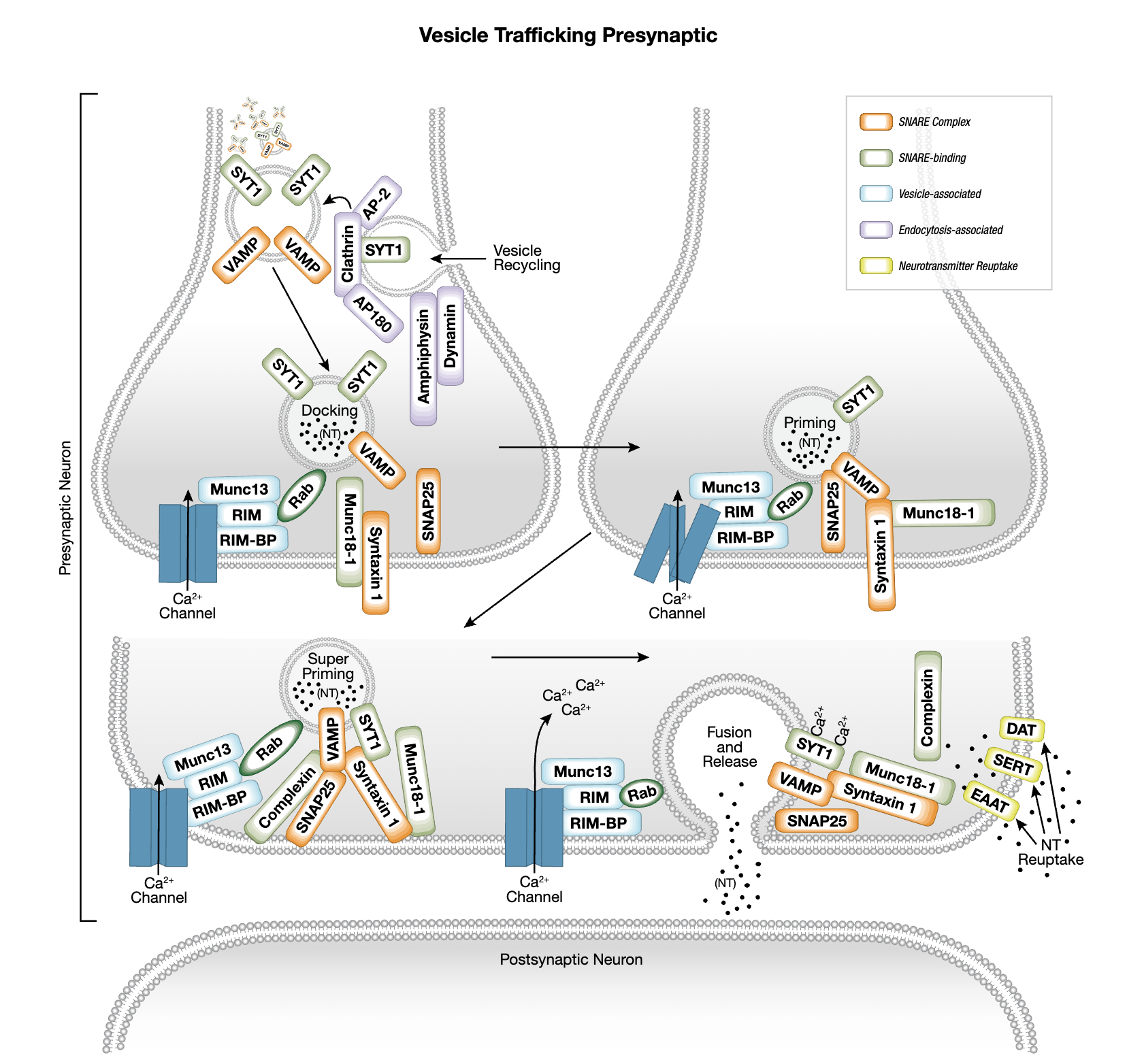Neurotransmitters, Receptors, and Transporters

What is neurotransmission?
Neurons are central nervous system (CNS) cells that receive and transmit electrochemical signals through a process called neurotransmission. The anatomy of neurons is designed to receive and send messages from neighboring cells. The axonal burst sends signals, and the dendrites receive messages from other cells.
?
Neurons are classified as excitatory or inhibitory according to the type of signal they release. These signals can hyperpolarize or depolarize the target neuron. Other features that help classify neurons include polarity, morphology, anatomical location, protein expression profiles, and directional flow of information.
?
What are neurotransmitters and what do they do?
Neurotransmission from neurons and the extraneuronal system mediates the transmission of electrical signals through a series of intracellular events. The extracellular space between two cells is the synapse, so the source of the signal is the presynaptic cell and the receiving neuron is the postsynaptic cell. Neurotransmitters are signaling molecules that generate excitatory or inhibitory responses on the postsynaptic membrane, thereby propagating or stopping an action potential.
?
Neurotransmitters can be classified as small molecules or neuropeptides. Whereas the synthesis of small neurotransmitters occurs locally within the axon terminus, neuropeptides are much larger than small molecules and are therefore synthesized in the cell.
Amino acids
lGlutamate is the most common neurotransmitter in the central nervous system, widely expressed in the brain, excitatory in nature, and plays an important role in memory and learning
lGABA (gamma-aminobutyric acid) - a inhibitory neurotransmitter, with a broad range of functions including regulating anxiety.
laspartic acid - a spinal cord ventral expression of excitatory neurotransmitter
Monoamine
lDopamine - a neuroregulatory neurotransmitter known to play a role in mood and addiction, but also plays an important role in controlling posture and movement. Reduced dopamine expression in the brain has been linked to muscle dysfunction in Parkinson's disease.
lSerotonin - an inhibitory neurotransmitter, can stable mood, regulate sleep cycle.
lNorepinephrine - An excitatory neurotransmitter released by the adrenal glands to increase alertness. Anxiety is associated with extremely high levels of norepinephrine.
lEpinephrine (adrenaline) - an excitatory neurotransmitter, by increasing heart rate and blood pressure to stimulate the body's "fight or flight" response.
lHistamine - involved in inflammation and excitatory neurotransmitter dilate blood vessels.

Polypeptide
lNeuropeptide Y - an inhibitory neurotransmitter, in fat formation, satiety and vasoconstriction play a role.
lSomatostatin - An inhibitory neurotransmitter produced in the digestive system and hypothalamus that inhibits insulin and glucagon production.
lOther neurotransmitters
lATP - is an important mediator in neuronal and glial cell signaling by increasing the rate of postsynaptic signal transmission.
lAdenosine-atp degradation products inhibit acetylcholine release and increase cAMP; It has neuroprotective effects in the condition of hypoxia, ischemia and neuroinflammation.
lAcetylcholine - an excitatory neurotransmitter that plays a key role in muscle function.
lNitric oxide, an oxidizing free radical, is a potent vasodilator and has the ability to induce the release of acetylcholine, catecholamine, and other neurotransmitters.
?
How does neurotransmission happen?
The release of neurotransmitters depends on changes in voltage within the cell - this is mediated by ligands and gated ion channels in presynaptic cells. The depolarization of the cell causes the action potential to propagate through the entire axon. At the presynaptic terminal, calcium inflow stimulates extracellular release of neurotransmitter vesicles.
?
After crossing the synapse, the neurotransmitter binds to postsynaptic receptors on the dendrites and produces an excitatory or inhibitory response.
?
Under the action potential, presynaptic cells use ion channels and ATP-dependent transporters to repolarize. Neurotransmission is terminated by neurotransmitter enzyme degradation in the synaptic cleta, transporter-mediated cycling to its original axon end, or transporter-mediated astrocyte uptake.
 首页
首页 400-620-6333
400-620-6333



 危险品化学品经营许可证(带存储)
危险品化学品经营许可证(带存储)